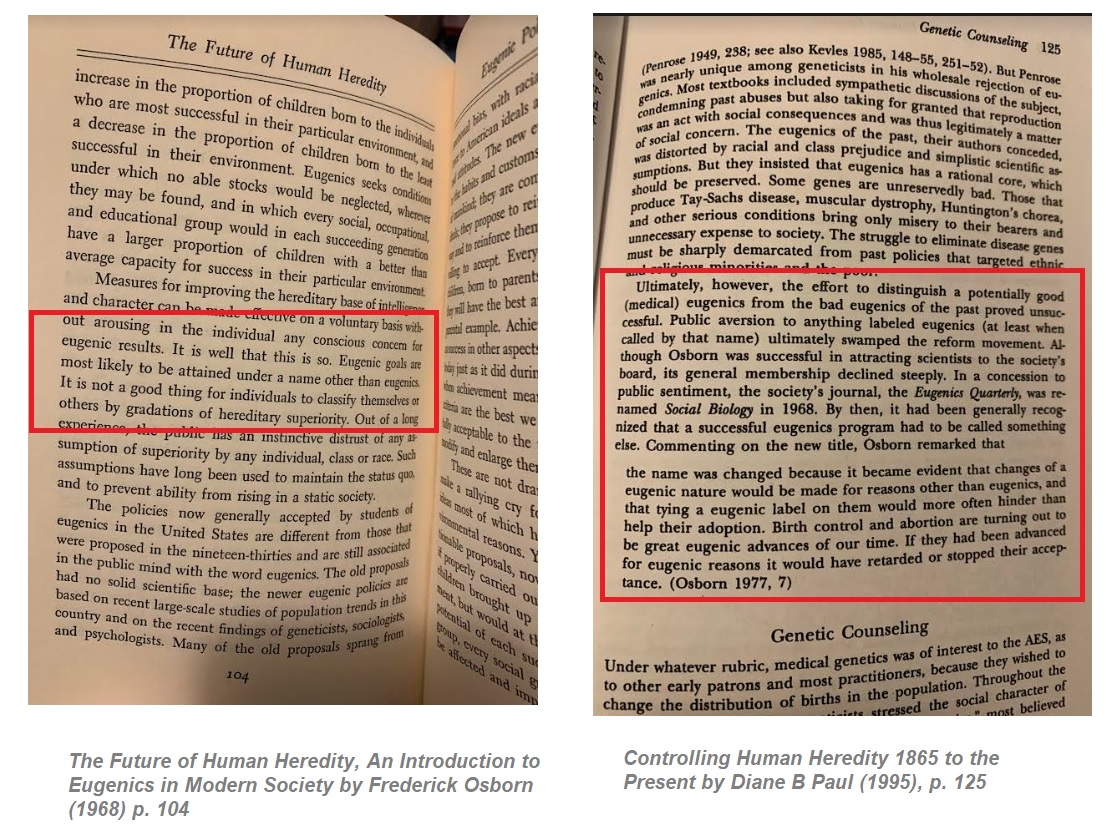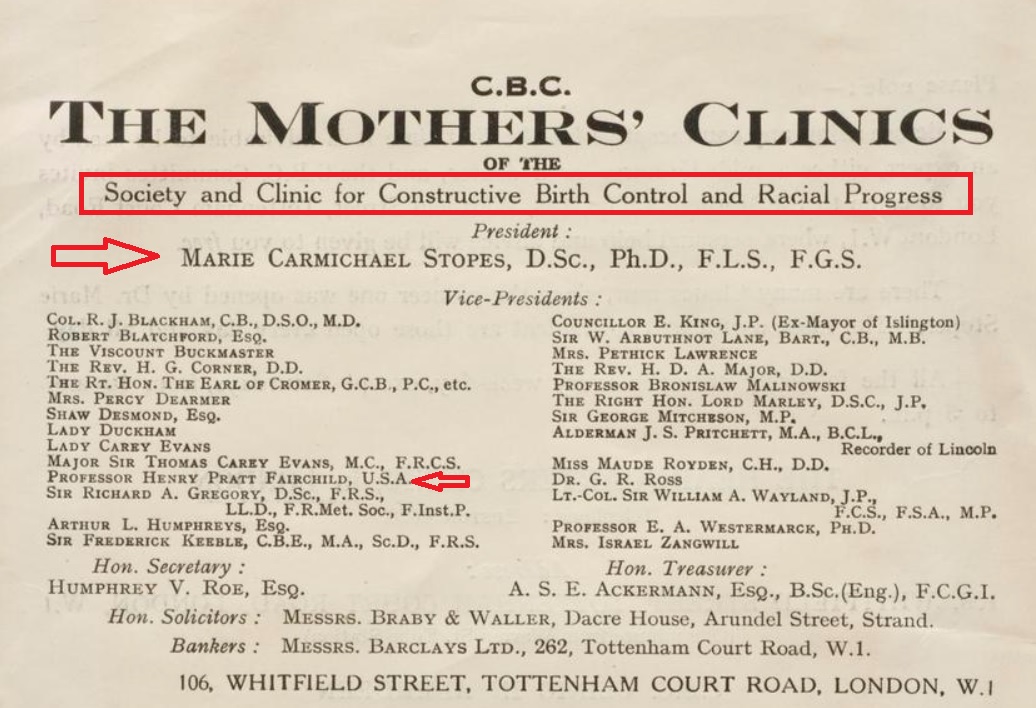Abortion is another form of racial injustice, due in part to its deep roots in the eugenics movement. Just as the racism of Margaret Sanger and Planned Parenthood was covered-up for decades, abortion defenders are now trying to rewrite and cover up the strong historical link between abortion and eugenics. A Washington Post op-ed by New York University Law Professor Melissa Murray claimed that “[t]he association of abortion with eugenics and genocide” and by extension, Roe v. Wade, are only “supposedly rooted in and tainted by racial injustice” (emphasis added). Murray then floated this false conspiracy (with zero evidence): “The effort to link abortion with eugenics and deracination is part of a longer-range strategy to destabilize and eventually overrule Roe.”
Murray wrote the piece as a response to Supreme Court Justice Clarence Thomas’s assertions that states have a “compelling interest in preventing abortion from becoming a tool of modern-day eugenics.” In his writing, Thomas accurately implicated Planned Parenthood’s founder and leaders.
Murray’s piece was published one day after Planned Parenthood president Alexis McGill Johnson made a weak attempt to distance her racist organization from its white supremacist, eugenicist founder Margaret Sanger. Now that Sanger has finally become toxic to many pro-abortion groups, abortion defenders like Murray appear to be attempting to rescue legal abortion from being canceled along with Sanger.
To do this, abortion advocates must attempt to untether abortion from eugenics… but the truth always comes out.
Margaret Sanger did not just “cite” eugenics – she was a eugenicist
Murray wrote, “Margaret Sanger spearheaded the birth control movement and, in the 1920s and 1930s, cited eugenics theory to expand contraceptive access. However, Sanger did not favor abortion, which she viewed as distasteful” (emphasis added).
This is only partly true.
It is well documented that Planned Parenthood’s founder was an avowed eugenicist who even accepted an invitation to speak to the Ku Klux Klan, something Sanger described in her autobiography. She held such a strong belief in eugenics that she embedded eugenics proponents deeply within her organization. The organizations Sanger founded (the American Birth Control League and Planned Parenthood) both have ties to eugenics proponents.
In 1919, Sanger admitted, “Before eugenists and others who are laboring for racial betterment can succeed, they must first clear the way for Birth Control….” Then, in 1921, Sanger proclaimed that “the campaign for birth control is not merely of eugenic value, but is practically identical in ideal with the final aim of eugenics.” (emphasis added)
In 1938, Sanger set up a “Committee on Planned Parenthood.” Her eugenic philosophy not only fed her work within Planned Parenthood and the birth control movement, but also her lesser known advocacy of euthanasia. She was more than just a passive observer where eugenics was concerned; she was a member of the American Eugenics Society and tried to unite her efforts and her publication with the eugenics movement.
But Murray is correct on one point: while Sanger preferred eugenic sterilization, she was not an outspoken advocate of abortion. Sanger, a nurse by trade, had witnessed the horrors of illegal abortion, and her opposition to abortion was due in part to the risks it posed to women’s lives. However, Sanger was not necessarily opposed to abortion, but instead focused on eugenic sterilization and birth control, which she saw as more effective at that time.
It is not “misleading” to link abortion to eugenics – it is historical fact
Murray wrote:
In Thomas’s telling, the disproportionate incidence of abortion among Black women today is the contemporary residue of the early eugenic movement’s efforts to target the Black community…
…Thomas’s linking of abortion to a racist history of eugenics, although misleading, lays the foundation for concluding that racial injustice provides that “special justification” for overruling Roe.”
“Misleading”?
The racist and eugenic agenda of abortion was not overlooked by Black leaders like Dick Gregory, H. Rap Brown, and Fannie Lou Hamer, who all labeled abortion “Black genocide.” Others in the Black community identified abortion as “class war against the poor,” calling abortion a form of “new slavery” and “a racist weapon of genocide against Black people” to prune “the Black race.”
Some denounced taxpayer-funded abortion as being “[p]ut forth as a solution for the poor.” Early abortion proponents had deep-rooted ties to eugenics.
Between “positive” and “negative” eugenics, negative usually won out
Murray wrote:
Indeed, as much as the campaign to expand birth control relied on eugenics, the 19th-century effort to criminalize and regulate abortion took a different tack, trading on nativist fears that abortion was suppressing the White birthrate and threatening the nation’s racial character.
Here, Murray glosses over the fact that eugenics was two-pronged: positive eugenics encouraged procreation from favored races and negative eugenics discouraged population increases among other races and people groups.
This was explained by Dr. Woods Hutchinson before a 1912 session of the American Public Health Association. “Eugenics has two divisions, prevention of the reproduction of defective, and encouragement of the production of the specially fit,” he said. Woods went on to suggest that the ‘unfit’ were to be segregated to “open-air farm colonies or sterilized.” This idea was reminiscent of one advocated by Sanger.
In his book “War Against the Weak,” writer Edwin Black made it clear that Planned Parenthood’s founder “preferred negative, coercive eugenics.” Black wrote, “Sanger’s solutions were mass sterilizations and mass segregation of the defective class.”
In her book, the “Pivot of Civilization,” Sanger noted this as well, writing in part:
Eugenics is chiefly valuable in its negative aspects…. On its so-called positive or constructive side, it fails to awaken any permanent interest….
On its negative side it shows us that we are paying for and even submitting to the dictates of an ever increasing, unceasingly spawning class of human beings who never should have been born at all—that the wealth of individuals and of states is being diverted from the development and the progress of human expression and civilization.
“The great eugenic advances of our time”
Murray claims, “Thomas conflates the history of birth control with that of abortion… Although abortion and contraception have converged under the rubric of reproductive rights, they have distinct histories.”
Here, Murray attempts to disconnect abortion from eugenics, claiming their histories are not the same. This is a red herring; leaders in eugenics were at the forefront in the push to legalize abortion.
The Population Council, a eugenics organization which brought the abortion pill (RU-486) to the United States, was founded in 1952 by John D. Rockefeller III who served as the organization’s first president. The organization’s second president was Frederick Osborn, a founding member of the American Eugenics Society (AES) who signed Margaret Sanger’s “Citizens Committee for Planned Parenthood.”
American Eugenics Society member Frank W. Notestein followed Osborn as president in 1959. By 1970, Notestein was serving on the Board of Directors of Planned Parenthood-World Population.
Osborn admitted that birth control and abortion were masked terms for the same ideology: eugenics. According to author Edwin Black, Osborn’s mission was to reinvent eugenics and make the concept more acceptable.
“Osborn and his colleagues were searching for a new socially palatable definition of eugenics that would promote the same ideals under a new mantle. One Osborn cohort, Frank Lorimer, wrote Osborn, ‘Personally, I would redefine “eugenics” to include concern with all condition affecting the life prospects of new human beings at birth.’ He added the caveat, ‘This is a matter of strategy rather than ideology,'” Black wrote.
After World War II, eugenics leaders became concerned that the Nazi Holocaust (which was inspired partly by the American eugenics movement) had negatively impacted the public’s perception of eugenics. This led to the American Eugenics Society’s decision to change the name of its publication. In her book, “Controlling Human Heredity 1865 to the Present,” author Diane B .Paul quoted Osborn as saying:
The name was changed because it became evident that changes of a eugenic nature would be made for reasons other than eugenics, and that tying a eugenic label on them would more often hinder than help their adoption. Birth control and abortion are turning out to be great eugenic advances of our time.
If they had been advanced for eugenic reasons it would have retarded or stopped their acceptance.

Abortion new name for eugenics according to Frederick Osborn
Osborn reiterated this in his 1968 book, “The Future of Human Heredity,” in which he stated, “In the United States contraception is the most important factor in reducing births, and after that abortion.” He later added, “Eugenic goals are most likely to be attained under a name other than eugenics.”
These “goals” began to unfold when multiple abortion organizations, rooted in eugenics, came onto the scene.
Planned Parenthood’s eugenic history extended well past Sanger
Alan F. Guttmacher, M.D. sat on the Population Council’s first Medical Advisory Board. Guttmacher was a VP of the American Eugenics Society who later became president of Planned Parenthood. He is credited with persuading Planned Parenthood’s board to commit abortions, claiming its “unlimited” availability was the only way to reduce population growth.
Guttmacher’s ideas of forced or compulsory population control measures were in lockstep with Sanger, who made sure that Planned Parenthood was knee deep in eugenics. Guttmacher’s namesake institution, the Guttmacher Institute, was actually the “research arm” and “special affiliate” of Planned Parenthood.
Eugenics has been a cornerstone of Planned Parenthood’s history, extending well beyond Sanger. Their ugly roots continue to be exposed. In 2020, Planned Parenthood finally admitted its founder was a racist white supremacist. Planned Parenthood corporate, along with at least 19 affiliates, also acknowledged a present-day problem of systemic racism within the organization.
At one time, Planned Parenthood was a referral agency for Iowa State’s Eugenics Board, which assigned sterilization for certain individuals. Chairman Dr. S.M. Korson admitted a percentage of their referrals came from the welfare office or Planned Parenthood.
The opening of Planned Parenthood’s first facility in Charlotte, North Carolina, was linked to figures such as Art Jones and Wallace Kuralt, (considered “sympathetic” with eugenicists), who influenced founder Sarah Bryant‘s decision to open the facility. “They had been involved and had known about Margaret Sanger,” Bryant stated.
Jones, an ardent proponent of population control, was credited for North Carolina’s move to decriminalize abortion in 1967. According to media reports, Jones believed that poverty, crime, and ghettos existed because of overpopulation. He called abortion a “very necessary medical tool for population restraint.” As Mecklenburg County’s welfare director from 1945 to 1972, Kuralt headed a coercive eugenic sterilization program in the state. In 1983, Planned Parenthood of Greater Charlotte awarded Kuralt its infamous Margaret Sanger Award, according to Kuralt’s 1994 Charlotte Observer obituary.
In addition to Planned Parenthood leaders who had connections to eugenics, the International Committee on Planned Parenthood (ICPP) — maintained by PPFA, among others — rented its space for free from the Eugenics Society. ICPP was replaced by the International Planned Parenthood Federation (IPPF) in 1952.
NARAL Pro-Choice America’s eugenic founders
Live Action News previously documented how two of NARAL’s three-member pre-formation planning committee were men who held and promoted radical racist, eugenicist ideas about population control. NARAL, one of the oldest abortion lobby organizations in the U.S., was formerly called the National Abortion Rights Action League.
Founding member Garrett Hardin was a leader of the American Eugenics Society. He was once described by UC Political Science Professor Matto Mildenberger as “a racist, eugenicist, nativist and Islamophobe.” Read more about Hardin’s coercive abortion and sterilization ideas here.
Lawrence Lader, another NARAL founder, dubbed the “Father of Abortion Rights,” was a biographer and disciple of Margaret Sanger. While Sanger openly used eugenic terms, Lader was more subtle, claiming society needed to look out for the “protection of the child and its future.” But what Lader really meant was not the future of every child, but the future of the elites, the perfect, and those who were mostly Caucasian.
UK’s Marie Stopes abortion chain was founded in eugenics
Live Action News previously documented how UK abortion chain Marie Stopes International (MSI) recently changed its name to “MSI Reproductive Choices” in an effort to distance itself from the eugenicist after whom it was named.
“Marie Stopes was a… supporter of the eugenics movement and expressed many opinions which are in stark contrast to MSI’s core values and principles,” said Simon Cooke, Chief Executive of MSI Reproductive Choices, in a press release.
Stopes had more than a legacy of “family planning.” She was a member of the Eugenics Society who advocated for the sterilization of the so-called “unfit.” She also founded the Society and Clinic for Constructive Birth Control and Racial Progress (CBC) which included Henry Pratt Fairchild, a past president of the American Eugenics Society and a vice-president of the American Birth Control League, which later became Planned Parenthood.
In 1938, Fairchild also sat on the board of the National Society for the Legalization of Euthanasia.

Marie Stopes Society and Clinic for Constructive Birth Control and Racial Progress founded in eugenics
Roe v. Wade and the elimination of certain populations
In a 2009 interview with the New York Times Magazine, the now-deceased Supreme Court Justice Ruth Bader Ginsberg suggested that Roe was a product of eugenic philosophy. “I had thought that at the time Roe was decided, there was concern about population growth and particularly growth in populations that we don’t want to have too many of,” she stated.
In 1992, Ron Weddington — a co-counsel for the plaintiff in Roe v. Wade and the ex-husband of Roe attorney Sarah Weddington — wrote a letter oozing with eugenic philosophy to the Bill Clinton administration, expressing a concern about the growing size of certain population groups.
His open letter recommended the president “eliminate” certain segments of society via vasectomies, tubal ligations, abortions, and the RU-486 abortion pill. Not long after that letter was sent, the U.S. rights of marketing and distribution of the abortion pill was handed over to the eugenics-founded Population Council in 1994. The drug’s distribution was later handed over to Danco Laboratories, a sub-licensee of the Population Council.
Anyone who claims that abortion and eugenics are not inextricably linked is either ignorant of history or is being deliberately deceptive.
“Like” Live Action News on Facebook for more pro-life news and commentary!







